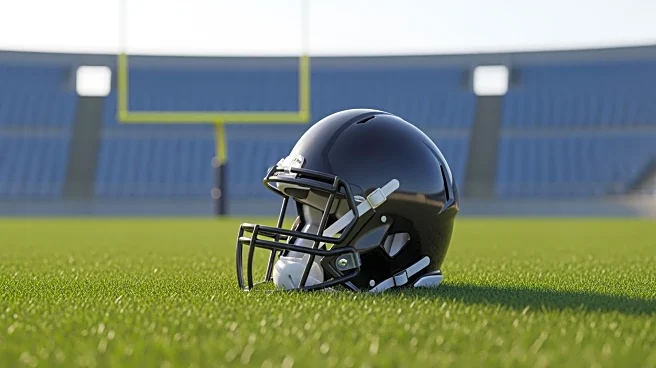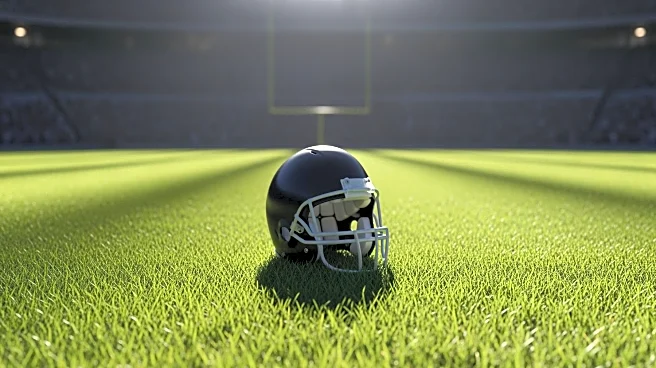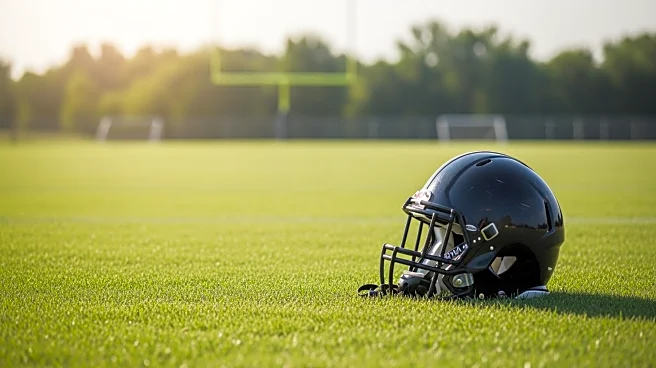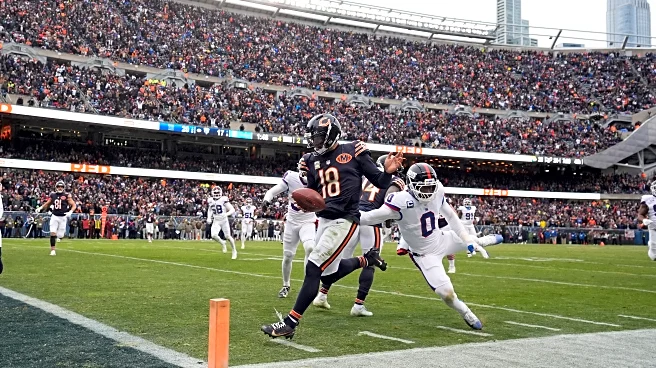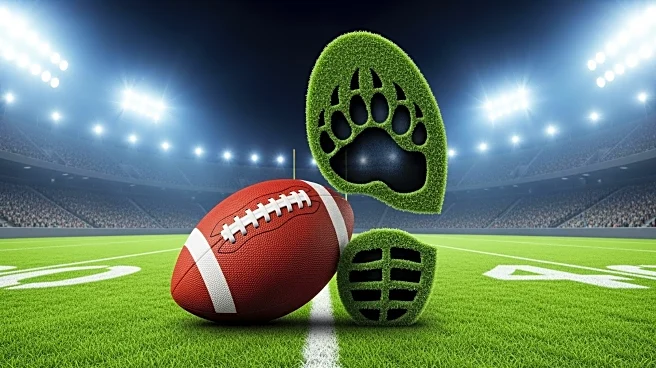What's Happening?
New York Giants rookie quarterback Jaxson Dart was ruled out in the fourth quarter of the game against the Chicago Bears due to a concussion. Dart sustained the injury following a hard hit on a fumble
in the third quarter. He was evaluated in the blue medical tent before walking slowly to the locker room. Prior to his exit, Dart had completed 19 of 29 passes for 242 yards and rushed for 66 yards, scoring two touchdowns. Russell Wilson replaced Dart, completing 3 of 7 passes for 45 yards and rushing twice for 12 yards. Despite leading 20-10 in the fourth quarter, the Giants were unable to maintain their lead, ultimately losing 24-20 to the Bears.
Why It's Important?
The concussion suffered by Jaxson Dart is significant as it marks the fourth time he has been evaluated for such an injury this season, raising concerns about his long-term health and career sustainability. Dart's absence in the game was felt as the Giants struggled to maintain their lead, highlighting his importance to the team's offensive strategy. The incident underscores the ongoing issue of player safety in the NFL, particularly regarding concussions, which can have lasting impacts on athletes' health. The Giants' loss also affects their standing in the league, potentially influencing playoff prospects.
What's Next?
The Giants will need to assess Dart's condition and determine his availability for upcoming games. This situation may prompt the team to reconsider their approach to player safety and concussion protocols. Russell Wilson's performance as a backup will be scrutinized, and the team may need to strategize differently if Dart is unable to return soon. The NFL may face increased pressure to address concussion-related issues, potentially leading to changes in league policies or practices.
Beyond the Headlines
The recurring concussions experienced by Jaxson Dart could have broader implications for the NFL's handling of player health and safety. This situation may spark discussions about the adequacy of current concussion protocols and the need for more stringent measures to protect players. Additionally, it raises ethical questions about the balance between competitive sports and athlete welfare, potentially influencing public perception and policy changes within the league.
